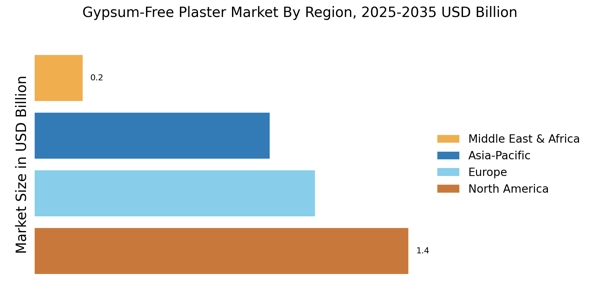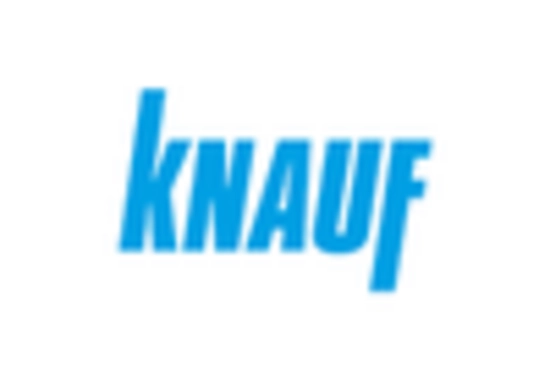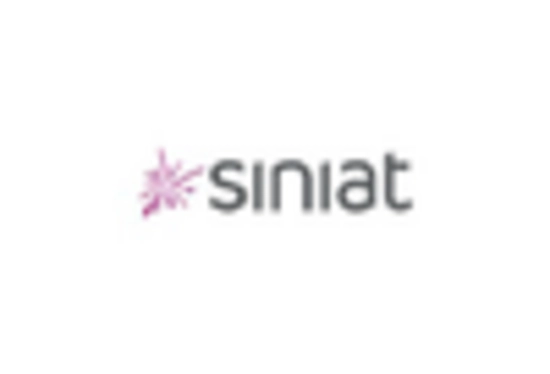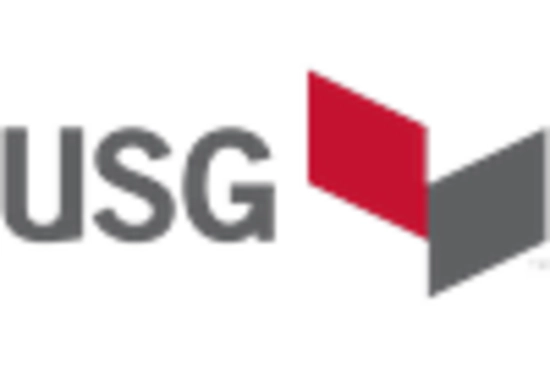Cost-Effectiveness
Cost considerations are a fundamental driver in the Gypsum-Free Plaster Market. As construction costs continue to rise, builders and contractors are seeking more economical alternatives to traditional materials. Gypsum-free plaster often presents a cost-effective solution, as it can reduce labor and material expenses due to its ease of application and lower maintenance requirements. In 2025, the market is projected to experience a shift towards more budget-friendly options, with gypsum-free plaster being favored for its long-term savings. This economic advantage is likely to attract a broader customer base, including small-scale builders and DIY enthusiasts, further propelling market growth.
Market Diversification
The diversification of applications for gypsum-free plaster is emerging as a significant driver in the Gypsum-Free Plaster Market. Beyond traditional wall finishes, gypsum-free plaster is increasingly being utilized in various sectors, including commercial, residential, and industrial applications. This versatility is appealing to a wide range of consumers, from architects to interior designers. In 2025, the market is expected to expand as new applications are discovered, such as in decorative finishes and acoustic solutions. This diversification not only broadens the customer base but also enhances the overall market potential, positioning gypsum-free plaster as a multifaceted solution in the construction industry.
Technological Innovations
Technological advancements play a crucial role in shaping the Gypsum-Free Plaster Market. Innovations in material science have led to the development of advanced formulations that enhance the performance of gypsum-free plaster. These innovations include improved adhesion properties, faster drying times, and enhanced durability, which are appealing to both contractors and consumers. The market is witnessing a surge in research and development activities aimed at creating high-performance plaster alternatives. As of 2025, the introduction of smart materials that can adapt to environmental conditions is anticipated to further revolutionize the industry. This technological evolution not only boosts the efficiency of construction processes but also positions gypsum-free plaster as a competitive alternative in the market.
Sustainability Initiatives
The increasing emphasis on sustainability is a pivotal driver for the Gypsum-Free Plaster Market. As environmental concerns escalate, construction and renovation sectors are gravitating towards eco-friendly materials. Gypsum-free plaster, often derived from natural or recycled materials, aligns with these sustainability goals. This shift is evidenced by a growing number of building projects seeking LEED certification, which encourages the use of sustainable materials. In 2025, the market for sustainable building materials is projected to reach substantial figures, indicating a robust demand for alternatives to traditional gypsum-based products. Consequently, manufacturers are innovating to meet this demand, enhancing the appeal of gypsum-free plaster as a viable option for environmentally conscious consumers.
Health and Safety Regulations
The rising awareness of health and safety standards is significantly influencing the Gypsum-Free Plaster Market. Regulatory bodies are increasingly mandating the use of materials that do not emit harmful substances, such as volatile organic compounds (VOCs). Gypsum-free plaster, often formulated to be non-toxic and safe for indoor air quality, is gaining traction as a preferred choice among builders and homeowners. In 2025, the market is expected to see a notable increase in demand for products that comply with stringent health regulations. This trend is likely to drive manufacturers to innovate and produce safer plaster options, thereby enhancing the overall market landscape.


















Leave a Comment